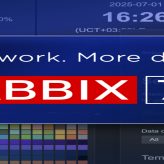

ITIL nowadays – what to use and what not to expect
15. 2. 2019
The phenomenal success of ITIL – IT service management framework can be sometimes accompanied by inaccurate ideas about what you can expect from this massive collection of best practices, methods, and concepts.
- Compressed descriptions of practices may appear abstract, but it’s not a theory.
The ITIL framework brings practical techniques proved by practice, but “practical” is not always equal to “specific”. (Abstraction is a very practical thing, if we are to compress knowledge into a small volume). ITIL can’t even offer a specific solution, because organizations differ in specific features.
- The resulting vs. instrumental values.
Benefits of ITIL are not just certain target values, but above all the instruments offered. You won’t always have caught fish (e.g. a ready-to-use process), but you will learn to catch fish (e.g. how to set up a process correctly).
- Context, the overall picture.
To gain maximum from ITIL it is fundamentally important to understand the overall picture, relationship between organizational elements, structures and process activities. Those who are versed in the framework essentials easily make up the necessary details that are described in ITIL’s rich lists.
- Openness and ability to integrate.
Openness towards other ( “adjacent” or related) frameworks gives ITIL its viability. Integration of useful practices and standards from other emerging areas continues. The upcoming new version retains the values of ITILv3/2011 and enriches them with equipment for accelerating economy and the tools that help to maintain control and visibility in increasingly complex environment.
|
What ITIL does not offer: |
What ITIL provides: |
|
Specific service strategies for enterprise or business unit. |
Conceptual tools, methods and techniques for analysis of conditions and creation of an effective service strategy. |
|
Ready-to-use processes tailored to your organization. |
Recommended process activities proven in a variety of environments and tools for their implementation in a specific environment. |
|
Specific definitions of organisational solutions. |
Proven roles, functions and their typical contents (responsibility, authority). Characteristics, advantages and disadvantages of different organizational structures. Tools for their implementation in a specific environment. |
|
Descriptions of the specific design of the IT services and their technologies. |
Conceptual approach for designing services and their elements and components in terms of technical and human resources and organizational settings. |
|
Specific procedures for implementation of services into operation. |
A comprehensive framework for managing the dynamics of changes and ensuring optimal efficiency of their results. |
|
Operational details for each site. |
Recommendations to organize effectively functioning management and delivery of IT services. |
|
A tailored quality management system. |
The cornerstones and principles for building an IT service management improvement system. |
Author: František Dvořák


